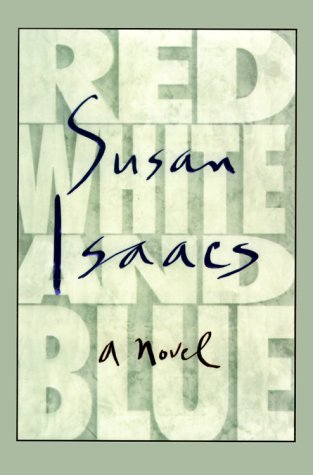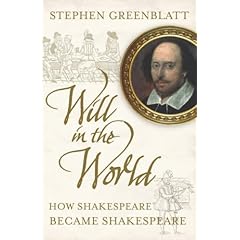There were only about twenty spectators at the ground. Why? Because it was women's cricket. Their loss; I had a great day, and here are some pictures to prove it. You can play along with your own version of 'spot the ball' if you like!
.jpg)
.jpg)
.jpg)
.jpg)
.jpg)
.jpg)
.jpg)
.jpg)
.jpg)
.jpg)
.jpg)
.jpg)
.jpg)
.jpg)
.jpg)
.jpg)
.jpg)
.jpg)
.jpg)
.jpg)
.jpg)
.jpg)
.jpg)
.jpg)
.jpg)
.jpg)
.jpg)
.jpg)
.jpg)
.jpg)
.jpg)
.jpg)
.jpg)
.jpg)
.jpg)
.jpg)
.jpg)
.jpg)
.jpg)
.jpg)
.jpg)
.jpg)
 Cameron Diaz's look was described as 'old school glamour'. We dressed in navy blue polyester at my old school. I like this gold strapless gown, but it would have been somewhat impractical on the lacrosse pitch.
Cameron Diaz's look was described as 'old school glamour'. We dressed in navy blue polyester at my old school. I like this gold strapless gown, but it would have been somewhat impractical on the lacrosse pitch. This is sort of similar, but what it makes up for in the practicality stakes with shoulders, it looses out with a fish tail. Sandra Bullock is beautiful and she has clearly chosen to match her outfit to the cute accessory she will take away later, but it might help if she could move. She can't even break into her trademark smile for fear of breathing.
This is sort of similar, but what it makes up for in the practicality stakes with shoulders, it looses out with a fish tail. Sandra Bullock is beautiful and she has clearly chosen to match her outfit to the cute accessory she will take away later, but it might help if she could move. She can't even break into her trademark smile for fear of breathing. Demi Moore's Versace frock is described as 'blush' which is slightly amusing as she is now so plastic, I doubt she is capable of doing that herself. However, she looks good for a doll and is able to wear all those ruffles without looking like a toilet roll cover.
Demi Moore's Versace frock is described as 'blush' which is slightly amusing as she is now so plastic, I doubt she is capable of doing that herself. However, she looks good for a doll and is able to wear all those ruffles without looking like a toilet roll cover. Speaking of ruffles - why does this work? Diane Kruger risks looking like a Christmas tree, but this dress is so frou-frou and chic it can only be Chanel. There is a gorgeous ribbon effect that hangs down the middle of her back, and adds extra interest, like a gift you can't wait to unwrap...
Speaking of ruffles - why does this work? Diane Kruger risks looking like a Christmas tree, but this dress is so frou-frou and chic it can only be Chanel. There is a gorgeous ribbon effect that hangs down the middle of her back, and adds extra interest, like a gift you can't wait to unwrap...
 ...whereas Jennifer Lopez (why is she at the Oscars at all?) in bubble-wrap looks like something you desperately want to cram back into the box.
...whereas Jennifer Lopez (why is she at the Oscars at all?) in bubble-wrap looks like something you desperately want to cram back into the box. Speaking of boxes, Vera Farmiga appears to have crashed through the first layer of chocolate and ended up in that annoyingly noisy crinkly stuff like an anaemic strawberry cream.
Speaking of boxes, Vera Farmiga appears to have crashed through the first layer of chocolate and ended up in that annoyingly noisy crinkly stuff like an anaemic strawberry cream. Helen Mirren retains her Queen of the Catwalk crown with this sparkly metallic number with the subtle sleeve detail that 'ladies of a certain age' wear so well. She is simply stunning.
Helen Mirren retains her Queen of the Catwalk crown with this sparkly metallic number with the subtle sleeve detail that 'ladies of a certain age' wear so well. She is simply stunning. My beloved Kate, however, looks like she is auditioning for the Tin Man in this suit of armour. Metallics don't always work the way you intended.
My beloved Kate, however, looks like she is auditioning for the Tin Man in this suit of armour. Metallics don't always work the way you intended. Carey Mulligan looks great in this Prada outfit sewn with tiny scissors which earned the word 'quirky' on the night by everyone who mentioned it. Who says black has to be boring? And she gets extra points for proving that yes, film stars really do have feet (I was beginning to think they were all on wheels).
Carey Mulligan looks great in this Prada outfit sewn with tiny scissors which earned the word 'quirky' on the night by everyone who mentioned it. Who says black has to be boring? And she gets extra points for proving that yes, film stars really do have feet (I was beginning to think they were all on wheels). At last, some colour! If you're not size six, you're going to stand out at the Oscars anyway. Mo'Nique does it for all the right reasons (as well as winning the best supporting actress award, obviously) in electric blue.
At last, some colour! If you're not size six, you're going to stand out at the Oscars anyway. Mo'Nique does it for all the right reasons (as well as winning the best supporting actress award, obviously) in electric blue.
 Oops, I spoke too soon about the colour. In all the excitement, Maggie Gyllehall forgot to get dressed and just wrapped herself in a bath sheet. It seems she remembered earrings though.
Oops, I spoke too soon about the colour. In all the excitement, Maggie Gyllehall forgot to get dressed and just wrapped herself in a bath sheet. It seems she remembered earrings though.
 This is one outfit that certainly doesn't need jewellery, and Zoe Saldana rocks it. Colour; check, sparkles; check, metallics; check, ruffles; check, fish tail; check. Perhaps she stole some of Maggie's materials?
This is one outfit that certainly doesn't need jewellery, and Zoe Saldana rocks it. Colour; check, sparkles; check, metallics; check, ruffles; check, fish tail; check. Perhaps she stole some of Maggie's materials?
 I actually like this dress on Penelope Cruz, although I did hear it described as 'provincial bridesmaid'. Let's just say that if you were the bride at this wedding, you would be well and truely outshone. So, colour; there is the good...
I actually like this dress on Penelope Cruz, although I did hear it described as 'provincial bridesmaid'. Let's just say that if you were the bride at this wedding, you would be well and truely outshone. So, colour; there is the good...  ...the bad (Sigourney Weaver is so angular that an asymmetric look just doesn't work for her, unless the exposed shoulder is to stop her blending into the carpet)...
...the bad (Sigourney Weaver is so angular that an asymmetric look just doesn't work for her, unless the exposed shoulder is to stop her blending into the carpet)...
 ...and the ugly. Sarah Jessica Parker gushed, 'Mr Lagerfeld made it just for tonight', to which I wanted to ask, 'What, this morning? In ten minutes? With his eyes closed?'
...and the ugly. Sarah Jessica Parker gushed, 'Mr Lagerfeld made it just for tonight', to which I wanted to ask, 'What, this morning? In ten minutes? With his eyes closed?'
 Red, White and Blue – Susan Isaacs (3.7)
Red, White and Blue – Susan Isaacs (3.7) Windmill Hill – Michael Jacobson (3.3)
Windmill Hill – Michael Jacobson (3.3) The Vintner’s Luck – Elizabeth Knox (4.2)
The Vintner’s Luck – Elizabeth Knox (4.2) Will in the World – Stephen Greenblatt (4.2)
Will in the World – Stephen Greenblatt (4.2)